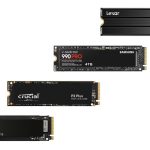SpaceX’s Starlink satellite internet service meets the latency standards required by NVIDIA’s GeForce Now cloud gaming service according to a new study published by researchers in Belgium and Italy. The researchers tested several Starlink performance parameters that are crucial for daily performance, as they took a look at the service’s latency, data transfer rates and web browsing performance. Their results demonstrated that as far as Belgium and Europe are concerned, Starlink surpasses geostationary satellite internet services with a wide margin, meets the latency marketed by SpaceX and matches the performance of traditional, wired broadband internet.
Starlink Median Latency Ranges In Between 46 milliseconds and 52 milliseconds Reveals Research
The study saw the researchers set up three similar computers that connected to the Internet and their own servers. One of these used Starlink and the other an unnamed geostationary satellite internet service in Europe to connect to the Internet. The remaining one used an ethernet adapter to connect to the UCLouvain network.
Through these, they tested the round trip time (RTT or latency), the information lost with and without heavy network load, the network throughput (the amount of data transferred in a unit of time, or Mbps) and the experience that a standard user might receive when browsing webpages measured through the time taken to fully load a webpage and the time taken for a webpage to display.
Latency, or the time that it takes for information to travel from and back to the user’s computer, is crucial for several different applications such as video conferencing and online gaming. The team tested three scenarios: the first was the base case with no network load, the second with a 100 MB load and the third with a load more comparable to real-time video traffic.
2 of 9
Lowest Latency Sits At 20 Milliseconds Show Five Month Long Tests
These revealed that in the first scenario, the median Starlink latency ranged between 46 milliseconds and 52 milliseconds and the lowest reading was 20.5 milliseconds. For the remaining two tests, the one with a 100 MB load showed that the median was 95 milliseconds and for the last test the median value was 50 milliseconds.
Additionally, the minimum latencies were observed for the German and Dutch servers, with those in Singapore and San Francisco giving readings of 184 milliseconds and 270 milliseconds, respectively and without any additional load testing. This is natural since the latter two servers are located at a considerable distance from the test computers. The researchers also traced the data path to these two locations and determined that it was the same, which implies that the laser satellites have not been turned on as of now – at least over Europe.
A five-month-long latency test also showed that overall the readings dropped from February onwards, potentially as more satellites came online and they also jumped between April in May – indicating that a network-wide change might have taken place. SpaceX started providing Ukrainias with Starlink coverage in March as well, and since then the company has had to fend off repeated cyberattacks against the service.
Summarizing the latency tests, the researchers conclude that their readings fall below the maximum latency of 80 milliseconds that is required by NVIDIA’s GeForce Now gaming service.
The cumulative density function (CDF) for Starlink throughput through an Ookla and QUIC speediest compared to another satellite internet service. The CDF displays the sum of values as a percentage of the total readings, with throughput on the Y (on the bottom) axis and the percentage of readings on the X (vertical) axis. Image: Figure 5 – François Michel, Martino Trevisan, Danilo Giordano, and Olivier Bonaven- ture. 2022. A First Look at Starlink Performance. In Proceedings of the 22nd ACM Internet Measurement Conference (IMC ’22), October 25–27, 2022, Nice, France. ACM, New York, NY, USA, 7 pages. https://doi.org/10.1145/3517745. 3561416
Starlink Does Not Limit Netflix, Disney+, YouTube Or Other Streaming Applications
Moving towards the throughput, the researchers tested the speed through the popular Ookla internet speed test platform and through the 100 MB QUIC test with its server located in the UCLouvain campus. Testing with QUIC allows for better measurement of performance since it does not let the internet network use performance-enhancing proxies.
The Ookla speed tests had a median download speed of 178 Mbps and a whopping highest reading of 386 Mbps. Dispelling some of the commonly held beliefs of the download speed varying based on the time of day, the team was unable to determine any trend based on whether the three-month-long tests were run during the day or the night. The 100 MB test posted lower readings, which the researchers speculate might be due to it using a single server when compared to the four servers that Ookla uses.
Web page loading and index speeds for Starlink, a geostationary satellite service and wired internet. Image: Figure 6 – François Michel, Martino Trevisan, Danilo Giordano, and Olivier Bonaven- ture. 2022. A First Look at Starlink Performance. In Proceedings of the 22nd ACM Internet Measurement Conference (IMC ’22), October 25–27, 2022, Nice, France. ACM, New York, NY, USA, 7 pages. https://doi.org/10.1145/3517745. 3561416
Finally, everyday web browsing tests for Starlink show that it performs more in line with wired internet than with the other satellite internet which uses satellites orbiting at a higher altitude.
Starlink also does not discriminate or limit the traffic from a host of popular video streaming services such as Netflix and YouTube. The researchers tested 22 different services and were unable to discover any attempts to limit the bandwidth, and they also confirmed that no performance-enhancing proxies are used to mitigate high latency problems.
Concluding their study, the team cautions that they did not deeply analyze the web browsing quality and only loaded home pages instead of others. Other factors such as different browsers and the quality of service during video calls were also not tested. They also outlined that packet loss (which often leads to voice or feed cutting out during a video conference for example) is present in the network, and occurs even when the network is not being heavily used.
The post Starlink Supports NVIDIA’s GeForce Now, YouTube & Netflix Says Research Paper by Ramish Zafar appeared first on Wccftech.







